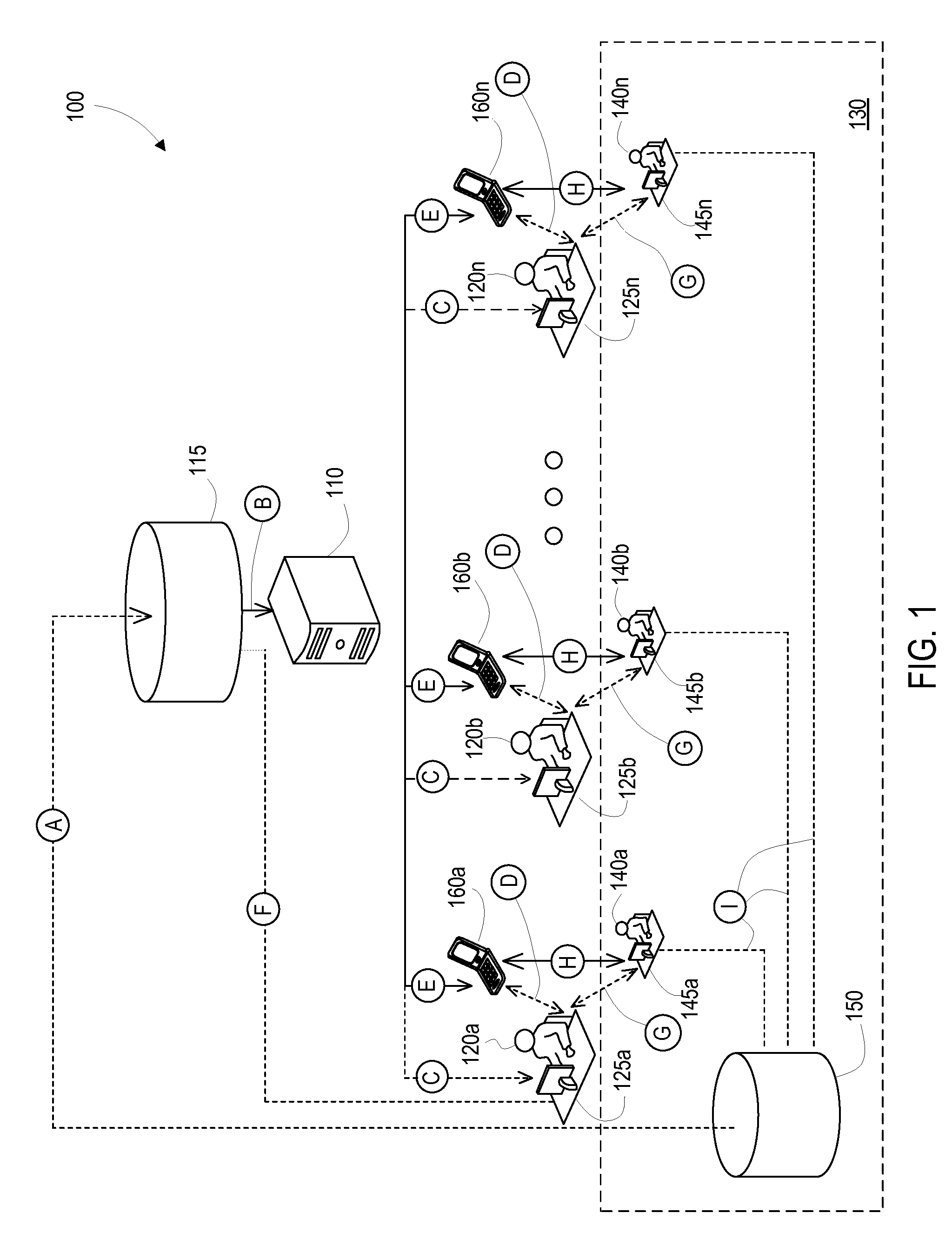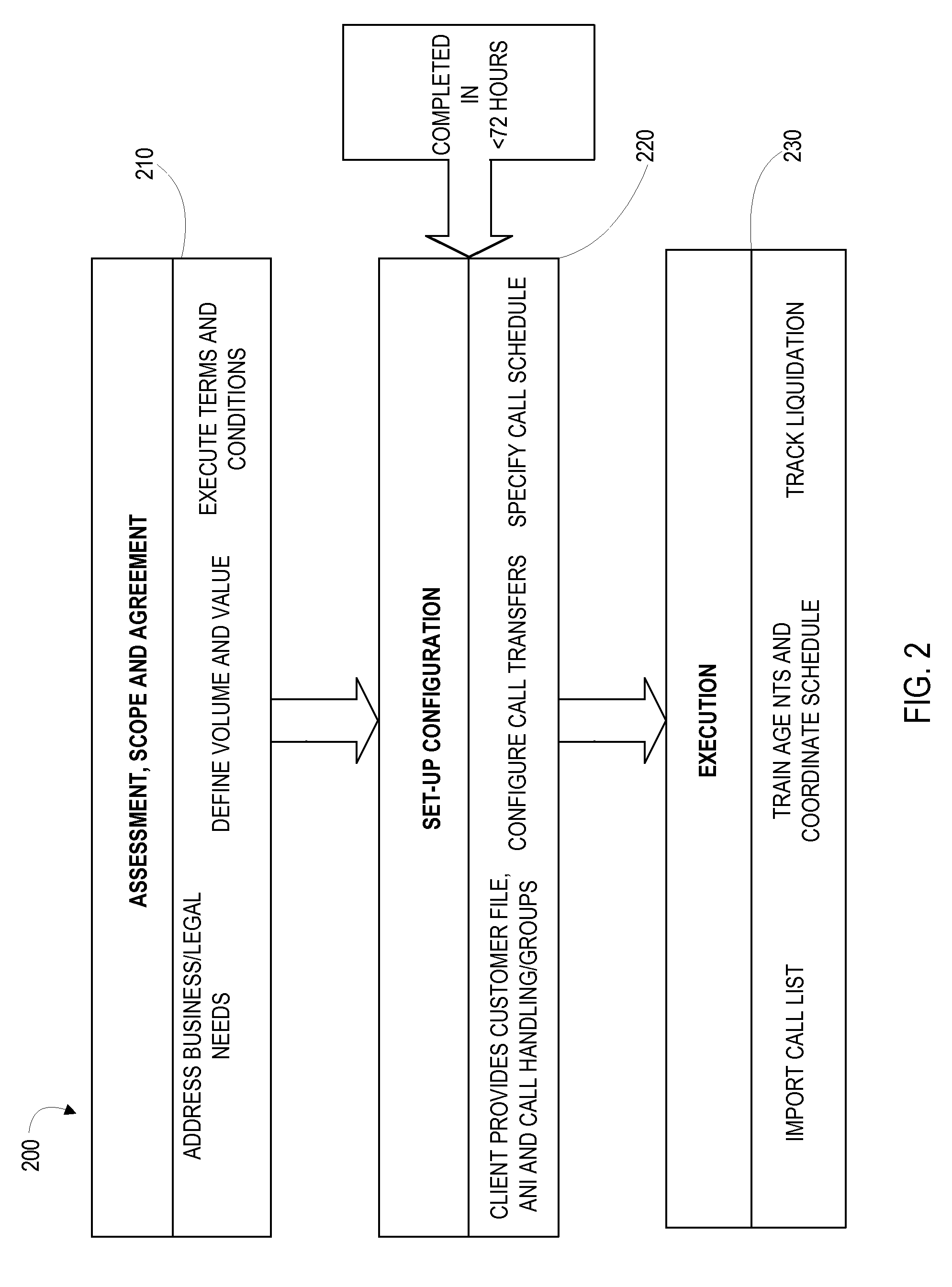Systems and methods for handling voluminous calls to cell phones using transfer agent process
a technology of transfer agent and cell phone, applied in the field of call center technologies, can solve the problems of increasing the cost of using the cell phone, consuming limited time, and not being able to reach 25% of all households in the united states
- Summary
- Abstract
- Description
- Claims
- Application Information
AI Technical Summary
Benefits of technology
Problems solved by technology
Method used
Image
Examples
Embodiment Construction
[0090]Before the present methods and systems are disclosed and described in greater detail hereinafter, it is to be understood that the methods and systems are not limited to specific methods, specific components, or particular implementations. It is also to be understood that the terminology used herein is for the purpose of describing particular aspects and embodiments only and is not intended to be limiting.
[0091]As used in the specification and the appended claims, the singular forms “a,”“an” and “the” include plural referents unless the context clearly dictates otherwise. Similarly, “optional” or “optionally” means that the subsequently described event or circumstance may or may not occur, and the description includes instances where the event or circumstance occurs and instances where it does not.
[0092]Throughout the description and claims of this specification, the word “comprise” and variations of the word, such as “comprising” and “comprises,” mean “including but not limite...
PUM
 Login to View More
Login to View More Abstract
Description
Claims
Application Information
 Login to View More
Login to View More - R&D
- Intellectual Property
- Life Sciences
- Materials
- Tech Scout
- Unparalleled Data Quality
- Higher Quality Content
- 60% Fewer Hallucinations
Browse by: Latest US Patents, China's latest patents, Technical Efficacy Thesaurus, Application Domain, Technology Topic, Popular Technical Reports.
© 2025 PatSnap. All rights reserved.Legal|Privacy policy|Modern Slavery Act Transparency Statement|Sitemap|About US| Contact US: help@patsnap.com



